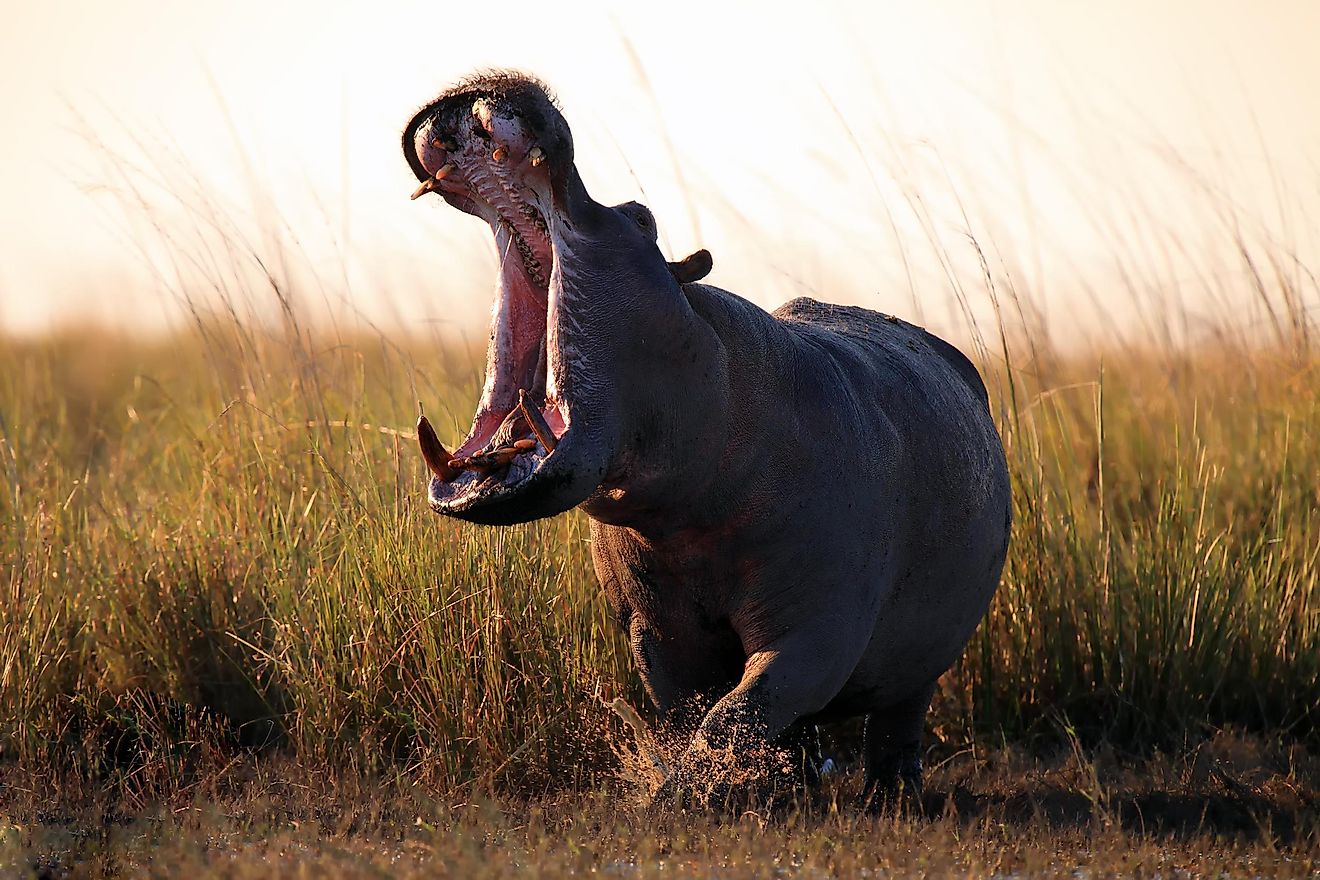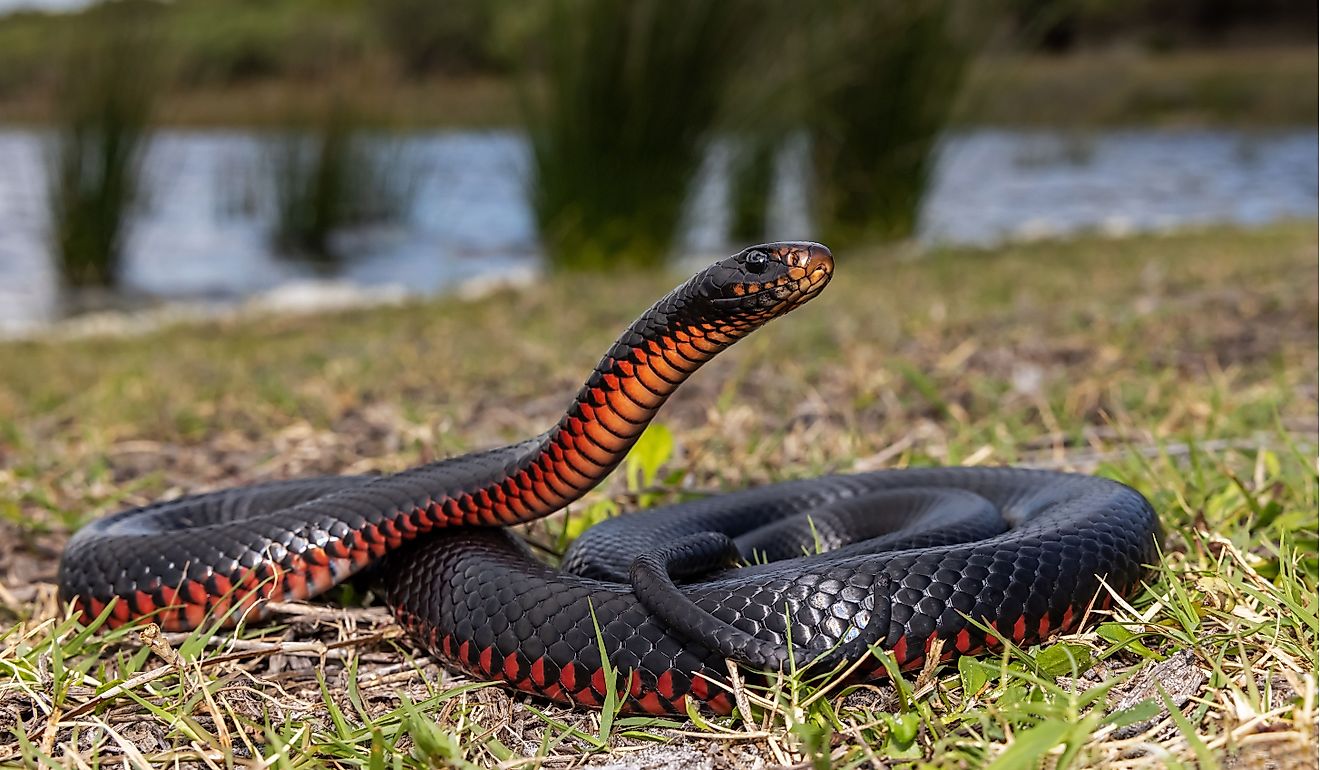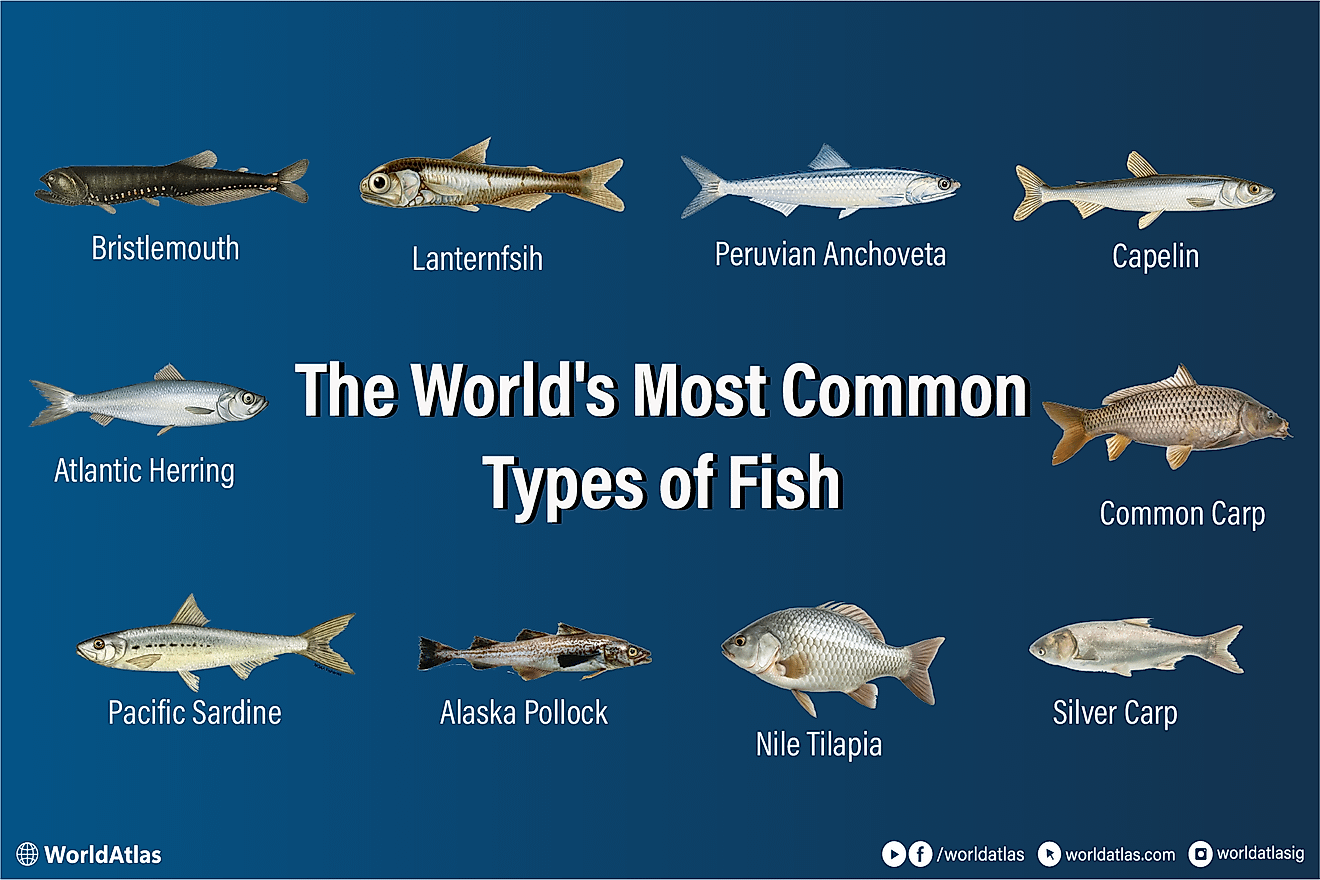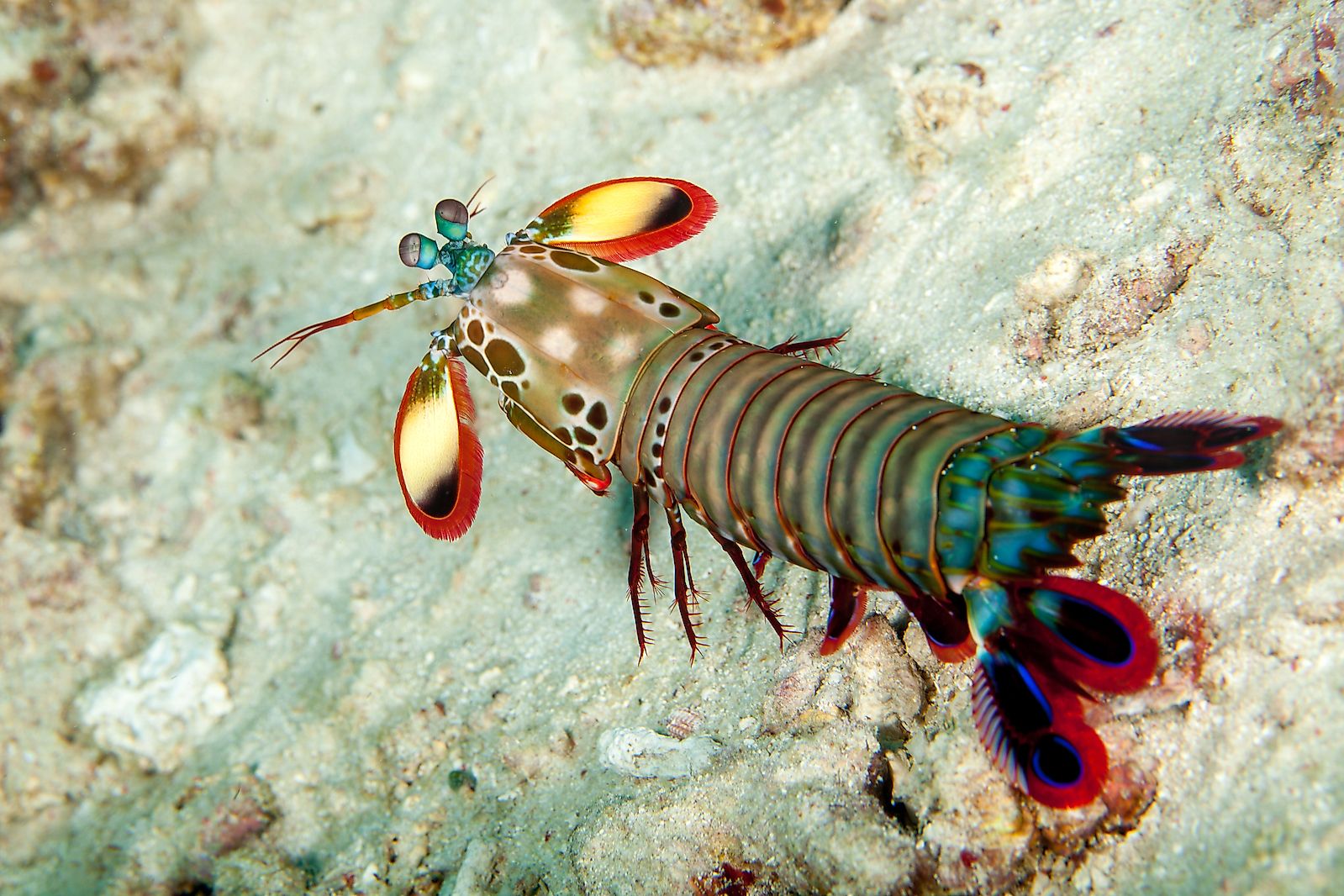
The Mantis Shrimp That Breaks Glass
The small but imposing mantis shrimp, order Stomatopoda, ranks among the strongest punchers in the animal kingdom. The mantis shrimp uses its specialized forelimbs to deliver lightning-fast strikes, so fast that the human eye cannot perceive them. In fact, their strikes are up to 50 times faster than a human blink.
The force of these strikes can cause water to bubble or even shatter glass.
In recent months, scientists have worked hard to decode how these shrimps avoid damage to their bodies, despite their powerful punch. These studies have revealed insights into the biology, physics, and engineering principles that make mantis shrimp as strong as they are.
The Speed and Force of the Mantis Shrimp
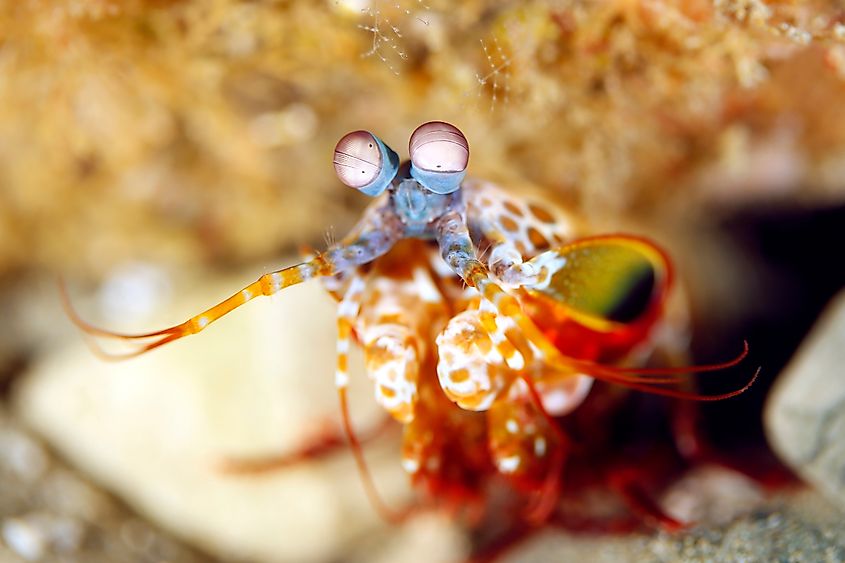
Mantis shrimp unleash their dactyl club at a pace of up to 817 miles per hour. This is roughly the same speed as a .22 caliber bullet. This comparison makes the mantis shrimp strike one of the fastest recorded biological motions.
Biomechanical measurements prove that these strikes can generate forces that exceed 1,000 newtons. It can also exceed 1,500 newtons if accounting for the elastic energy stored in the mantis shrimp’s latches.
It is important to note that mantis shrimp fall into two functional groups: smashers and spearers.
Smashers wield their appendages, which resemble clubs, to destroy hard prey. Spearers use spiny raptorial claws to impale animals with softer bodies.
The peacock mantis shrimp, Octodactylus scyllarus, possesses dactyl clubs that generate the abovementioned forces.
Spearers, such as Lysiosquillina maculata or the zebra mantis shrimp, strike in 25 milliseconds, snagging fish with razor-sharp spikes.
Breaking the Glass

Aquarists often find damage to their tanks when they keep mantis shrimp. In a now-infamous BBC segment, an aquarium tank abruptly shattered after its resident stomatopod repeatedly struck it.
Even modern tanks can fail under this type of pressure, so some aquarists have taken to installing protective plexiglass panels at the bottoms of their tanks. This is meant to protect against burrowing and punching.
However, they will find it hard to recapture the shrimp if they decide to burrow into live rock instead.
How the Mantis Shrimp Survives Its Own Punch
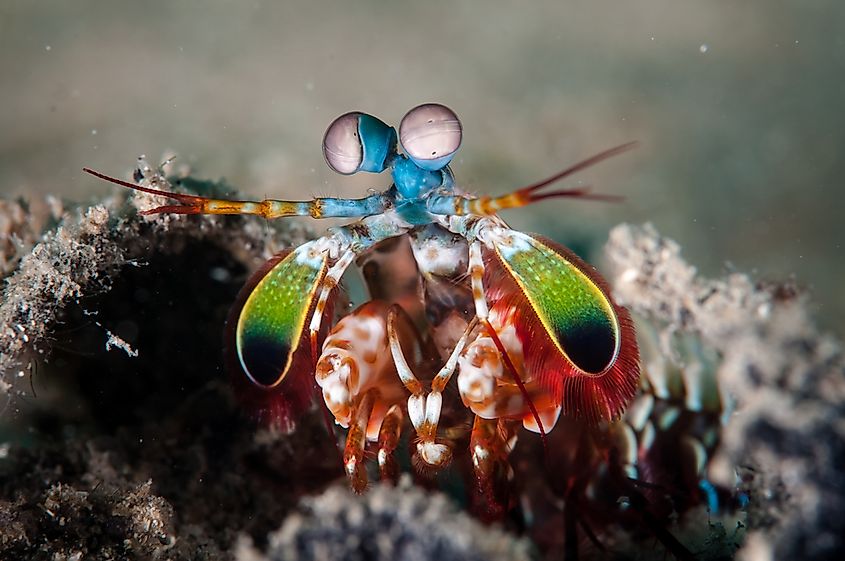
Experiments conducted with ultrasonic lasers reveal that smashers’ clubs have a phononic shield. They alternate layers of mineral and protein that filter out stress waves, preventing the shrimp from inflicting self-damage.
Northwestern University teams discovered this when they discovered that the shrimp’s layered microstructure is similar to a noise-cancelling barrier but in solid form.
Numerical simulations confirmed that the club’s deeper twisted plywood architecture is what scatters the high-frequency shear waves. The outer coating is made of hydroxyapatite, which is similar to human tooth enamel. At the same time, it allows energy directed at prey to pass through unhampered.
Experiments done in 2025 further uncovered a middle herringbone pattern in the club’s outer region. This layer consists of mineralized chitin fibers that resist cracking, and the pattern improves durability by allocating stress across these microscopic fibers.
New Discoveries
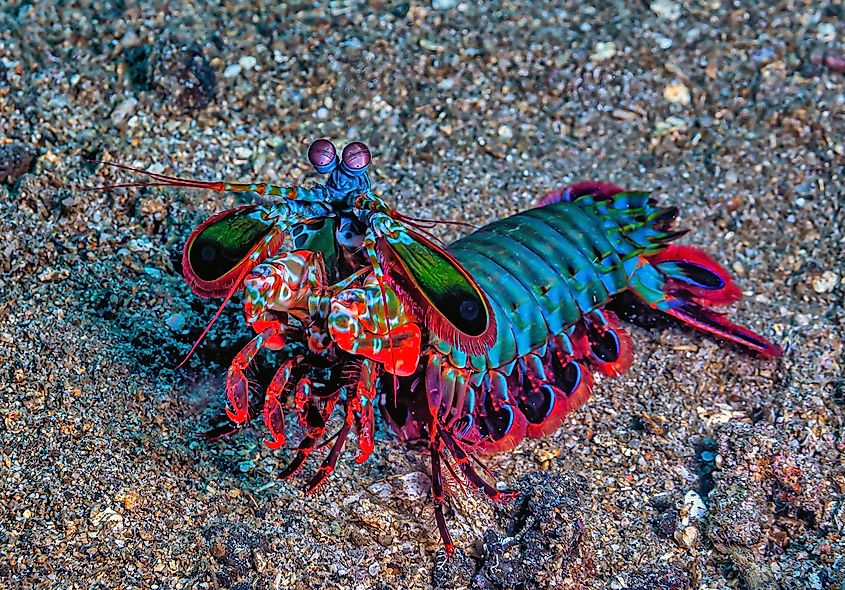
Ongoing phylogenetic analysis and studies place the Stomatopoda at around 520 extant species. Constant revisions are made, however, because genetic data continues to reshape the classification of this species.
In 2024, Incertasquilla chimera was given a new genus after researchers noted it had hybrid features, including stripes (for camouflage), spiny clubs, and false eye-spots. These traits act as a bridge linking distinct mantis shrimp families.
Species Diversity
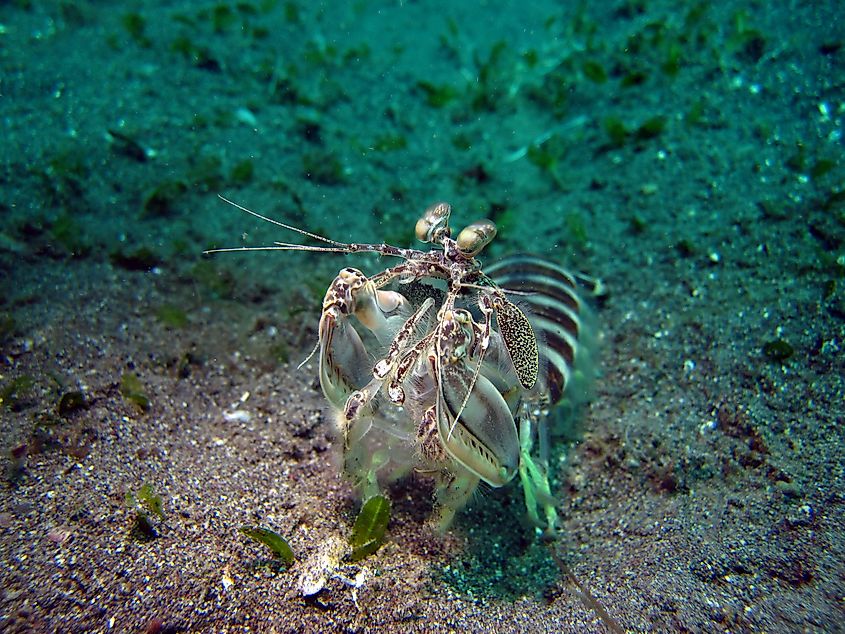
The 520 extant species fall into three suborders: Palaeostomatopodea, Archaeostomatopodea, and the living Unipeltata. These are organized into seven superfamilies and seventeen families.
Within this extended diversity, mantis shrimp range in size from a few centimeters to nearly 40cm long. Their body forms adapt to either smash or spear hunting strategies.
Habitat

Most mantis shrimp live in warm, shallow waters in tropical or subtropical seas. They prefer depths from the intertidal zone to around 50-70 meters. They also construct and live in U- or J-shaped burrows, which they carve into substrates.
Mantises are spearing species that build burrows in soft sediments, including mud and sand, found in seagrass meadows and estuaries. Others are smashing species that burrow in hard materials such as rocky reef flats and coral rubble.
When they leave these burrows for mating or hunting, mantis shrimp plug the entrances with shells or sand. They also retreat at the slightest sign of danger.
In estuarine systems, including muddy bottoms influenced by rivers, mantis shrimp tolerate fluctuations in salinity and temperature well. This demonstrates excellent environmental flexibility.
Mantis Shrimp Role in Reefs
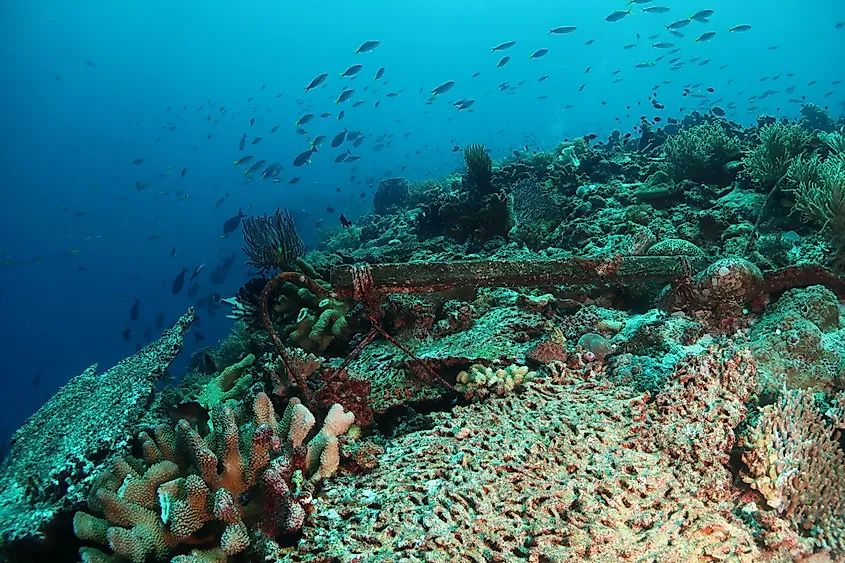
Mantis shrimp are mid-level predators that feed on crabs, snails, and bivalves. They rid coral reefs and adjacent habitats of an overpopulation of these invertebrates. As such, they also help prevent overgrazing on algae and biorerosion of reef structures. This helps to build reef resilience.
Bioturbation and Nutrient Cycling

Mantis shrimp are constantly burrow-digging and maintaining these burrows. Through this process, they drive bioturbation, or the reworking of sediments. This helps to:
- Oxygenate deeper sediment layers, supporting aerobic microbes.
- Enhance microbial turnover, accelerating the breakdown of organic matter and nutrient remineralization. Sediment mixing plays a big role in cycling carbon, nitrogen, and other elements. These elements support reef food webs.
Ecosystem Engineering

Sometimes, mantis shrimp abandon or modify their burrows, leaving cavities behind. However, the cavities are not wasted as they become a refuge for other species, including worms, crabs, and fish. Some marine snails (of the genus Caledoniella) live as obligate ectoparasites on the abdominal surface of gonodactylid mantis shrimp. This illustrates parasitic relationships.
Unfortunately, even though mantis shrimp are powerful predators, they are also prey. They fall victim to reef fish, small sharks, and octopuses. Often, their burrowing behavior helps them avoid predators, but overall, they form a critical part of reef food chains.
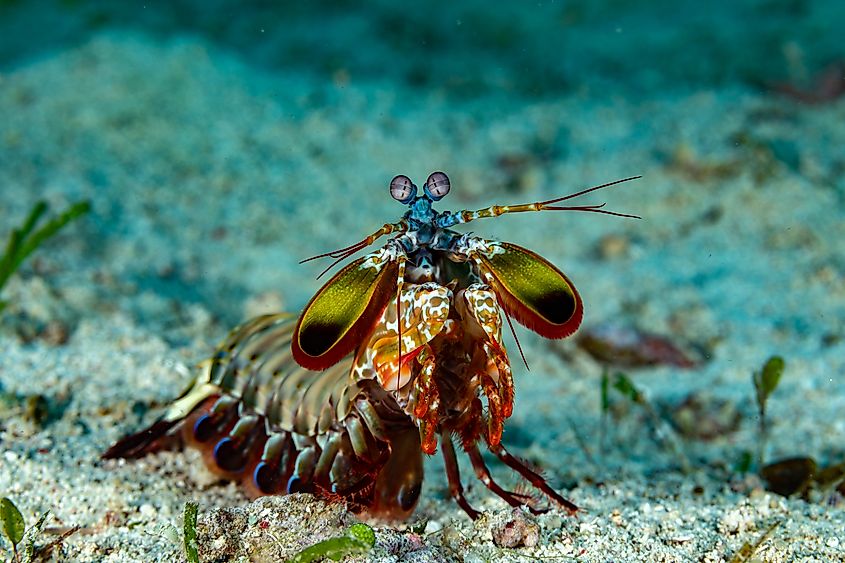
Mantis shrimp are more than coveted aquarium stars. They are proof that evolution can bring out extreme power in small packages. Moreover, the discovery of these shrimp’s phononic shield solves a long-standing scientific mystery. It also opened the door to creating more impact-resistant materials inspired by one of the ocean’s toughest creatures.



